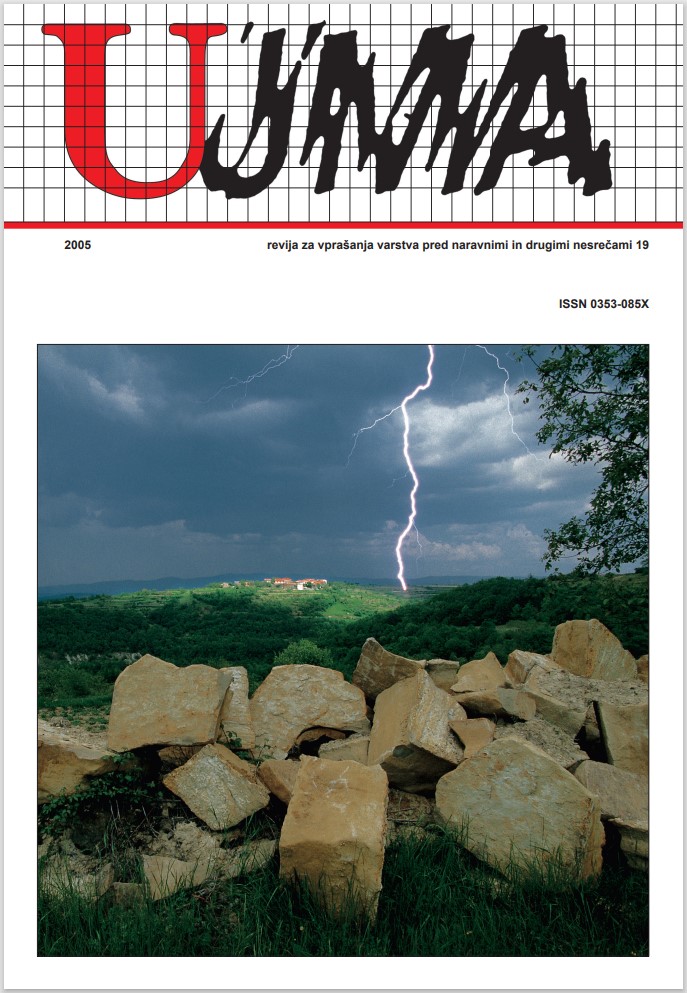CLIMATE IN SLOVENIA IN 2004
Abstract
Mean annual temperature was above the 1961– 1990 average; the anomaly was less than 1 °C. Only in the Ljubljana basin, Primorje, Dolenjska and part of the Štajerska region was the anomaly statistically significant. The anomaly of mean daily minimum temperature was mostly larger that the anomaly of the mean maximum daily temperature. The duration of bright sunshine was above the 1961–1990 average in Savinjska ravan, the Ljubljana basin, Primorska and the Julian Alps, but still within the limits of normal variability. There were more areas where bright sunshine duration was below the average, the largest negative anomaly being observed in the Koroška region, where one tenth less sunny weather than on average was registered. Precipitation was most abundant in the Julian Alps; on Mount Vogel 3233 mm fell, in the village of Soča 3048 mm and in Žaga 2999 mm. On the other side of the country, in the Prekmurje region, only about one quarter of the precipitation in the Julian Alps fell. Such a huge difference in precipitation between the Julian Alps and Prekmurje is common. In Veliki Dolenci, only 740 mm fell. The coastal region also got less than 900 mm. Most of the Prekmurje region, Slovenske gorice, Bizeljsko gričevje, part of the Karavanke, Goriška Brda, the Vipava valley, the Karst and the coastal region got less precipitation than on average. In Ljubljana, 1696 mm fell, which is about 20 % above the average. Maximum snow cover on Kredarica was 465 cm.
References
Meteorološki arhiv Agencije RS za okolje, Urad za meteorologijo.
Mesečni bilten Agencije RS za okolje, letnik XI, številke 1 do 12.
Downloads
Published
Issue
Section
License

This work is licensed under a Creative Commons Attribution-NonCommercial-NoDerivatives 4.0 International License.
The articles are made available to the public under Creative Commons Attribution-NonCommercial-NoDerivatives 4.0 International (CC BY-NC-ND 4.0).


